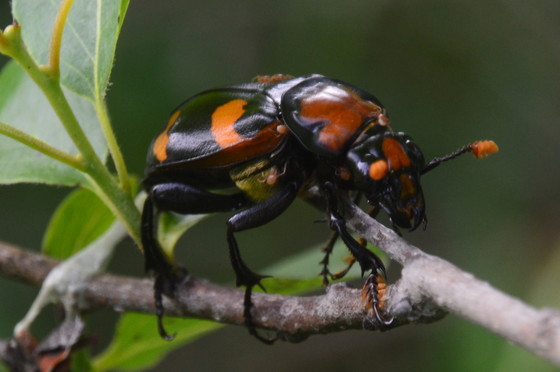Get to Know Oklahoma's Nonvenomous Snakes
Oklahoma’s snakes may share a few key characteristics, but they come in different lengths; colors and patterns; and have a number of different hunting methods. Noble Research Institute’s Mike Porter introduces many of Oklahoma’s nonvenomous snakes in this Outdoor Oklahoma episode.
Meet Oklahoma's nonvenomous snakes
Species Spotlight: Ornate Box Turtle
Box turtles, including the highly decorated ornate box turtle, are most often seen from late spring through mid-summer as they travel across their habitat and along roadways. While the ornate has the most elaborate markings of Oklahoma’s two true land turtles they also have a patterned plastron, or bottom portion of the shell. Three-toed box turtles may have a patterned carapace, or top-portioned of the shell, but the bottom part of the shell is unpatterned. Ornate box turtles can be found statewide, but are most common in relatively open western counties. Neither ornate nor three-toed box turtles may be collected for commercial purposes.
Learn more in the Wildlife Department's online guide
 Click to expand the full image.
Connection of Packsaddle WMA’s Birds to Shinnery Oak Studied
Researchers with Oklahoma State University recently identified the bird community utilizing Packsaddle Wildlife Management Area's shinnery oak habitat and studied the restoration opportunities for the unique plant. During the two-year study, they detected more than 5,500 individual birds of 77 species using shinnery oak habitat. Vegetation measurements were taken at the survey locations to identify preferred habitat (height, cover, time since fire) for the birds.
Get more details in the final report

USFWS Considers Downlisting American Burying Beetle
North America’s largest carrion beetle appears to be staging a comeback, and the U.S. Fish and Wildlife Service is proposing to downlist the American burying beetle from endangered to threatened. Once restricted to two states, Oklahoma and Rhode Island, the beetle is now known to occur in nine states. The beetle’s increase is largely credited to recovery efforts by many conservation partners. Comments regarding the proposed downlisting will be accepted by the USFWS on or before July 2, 2019.
The American burying beetle was recently featured on Outdoor Oklahoma.
Learn more about the beetle and the proposed downlisting
Calendar of Events
Selman Bat Watch Registration
May 28 - June 7
Hackberry Flat Breeding Bird Tour
June 8; 6 - 10 a.m.
Frederick
|